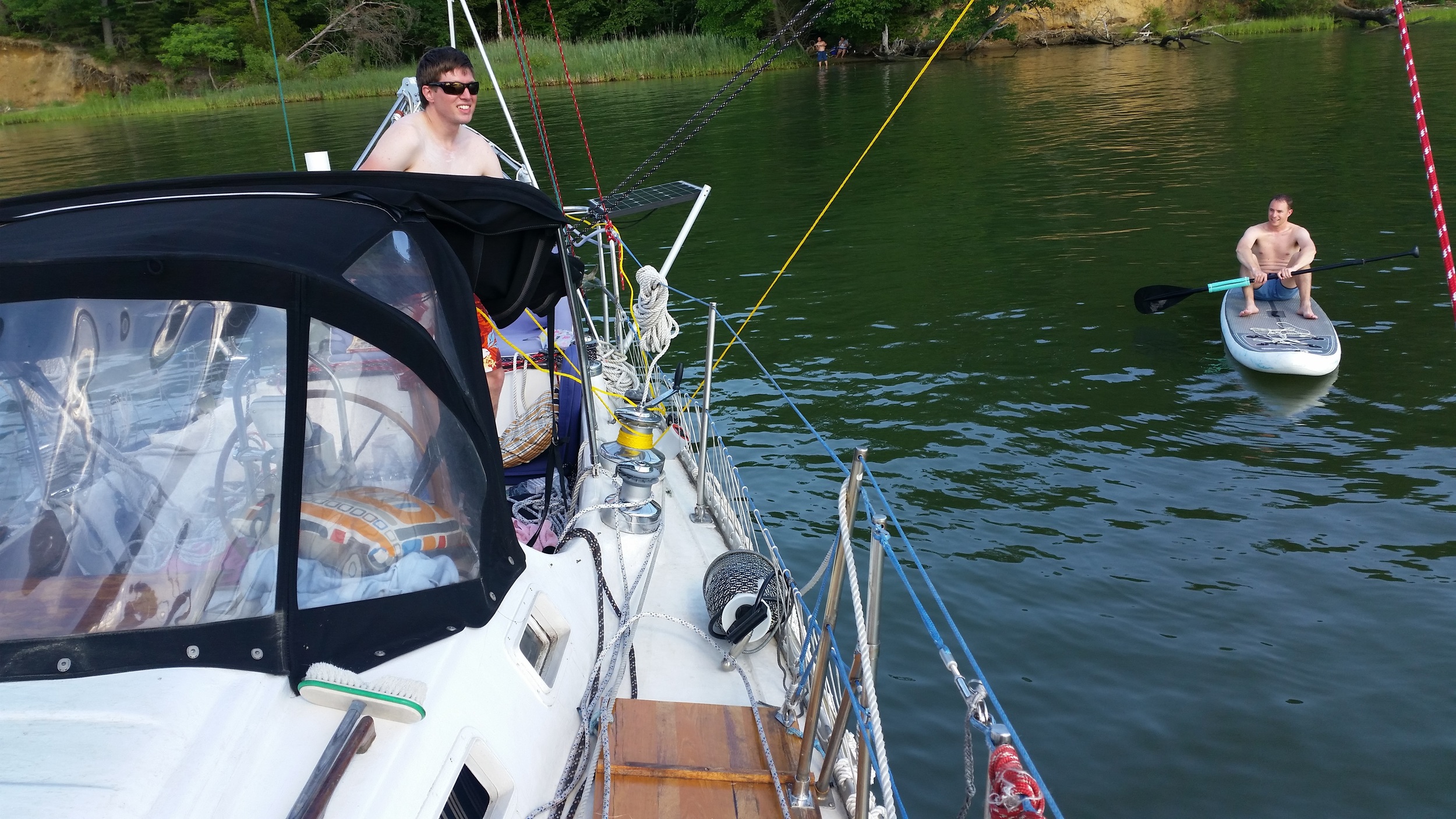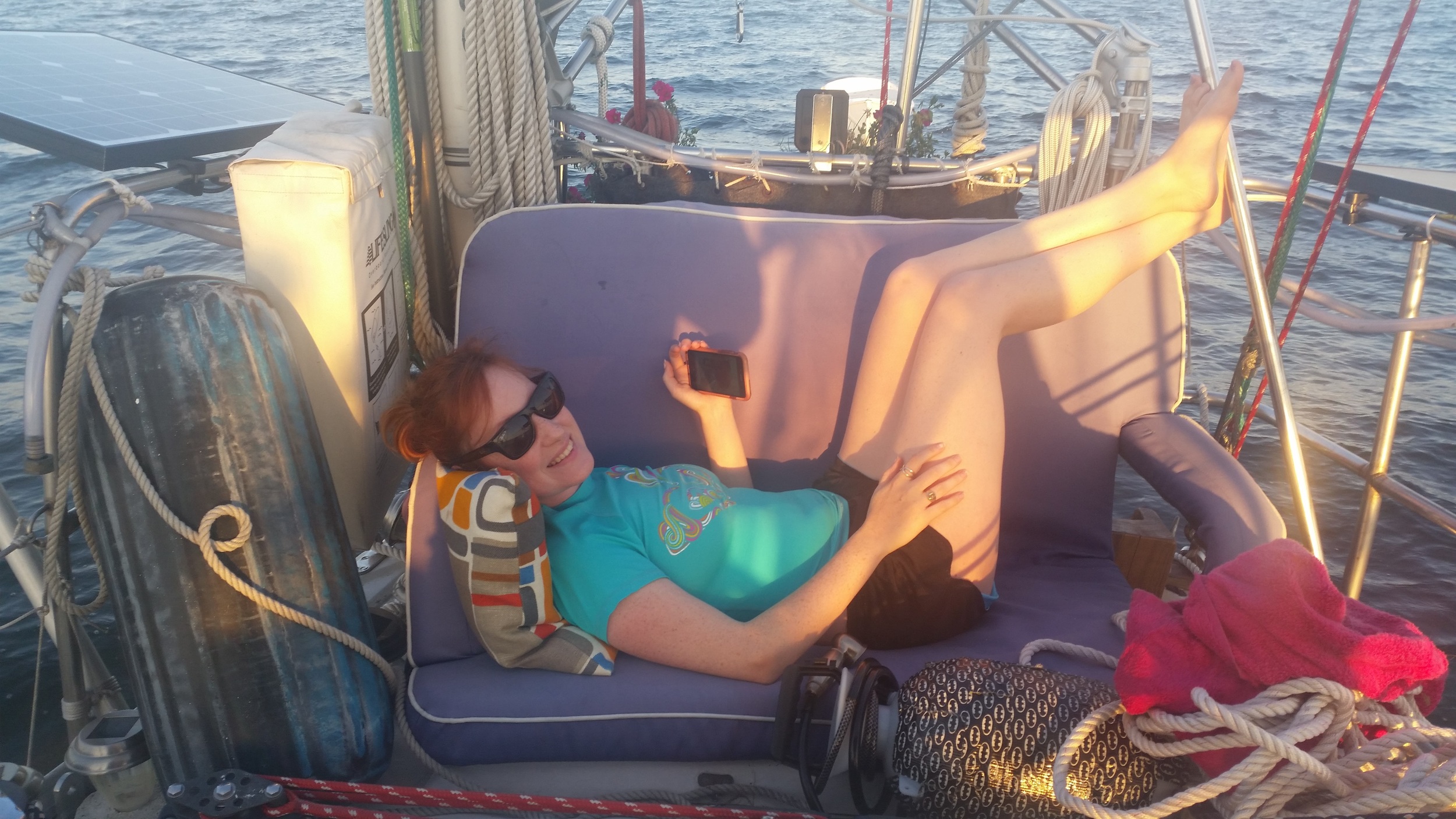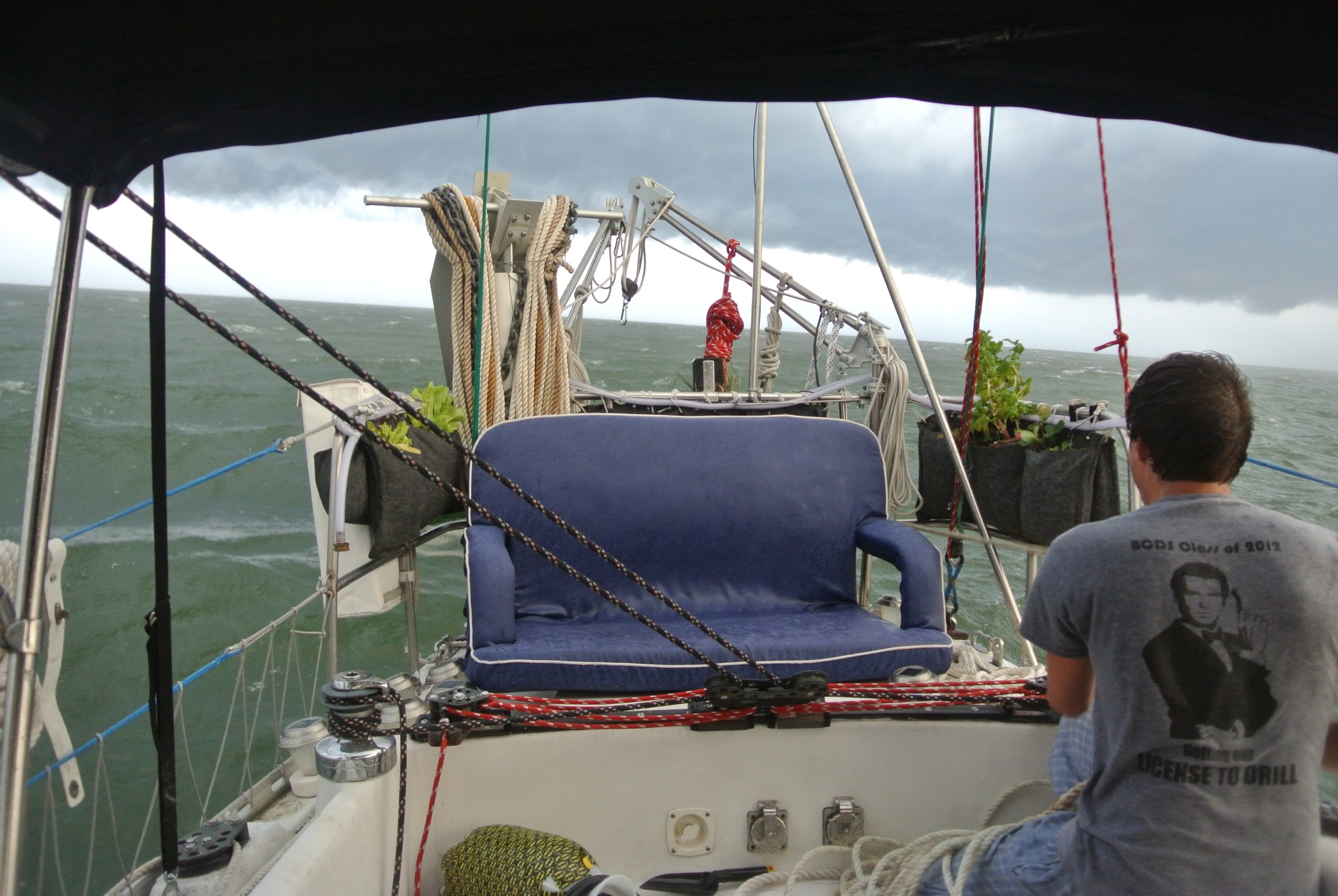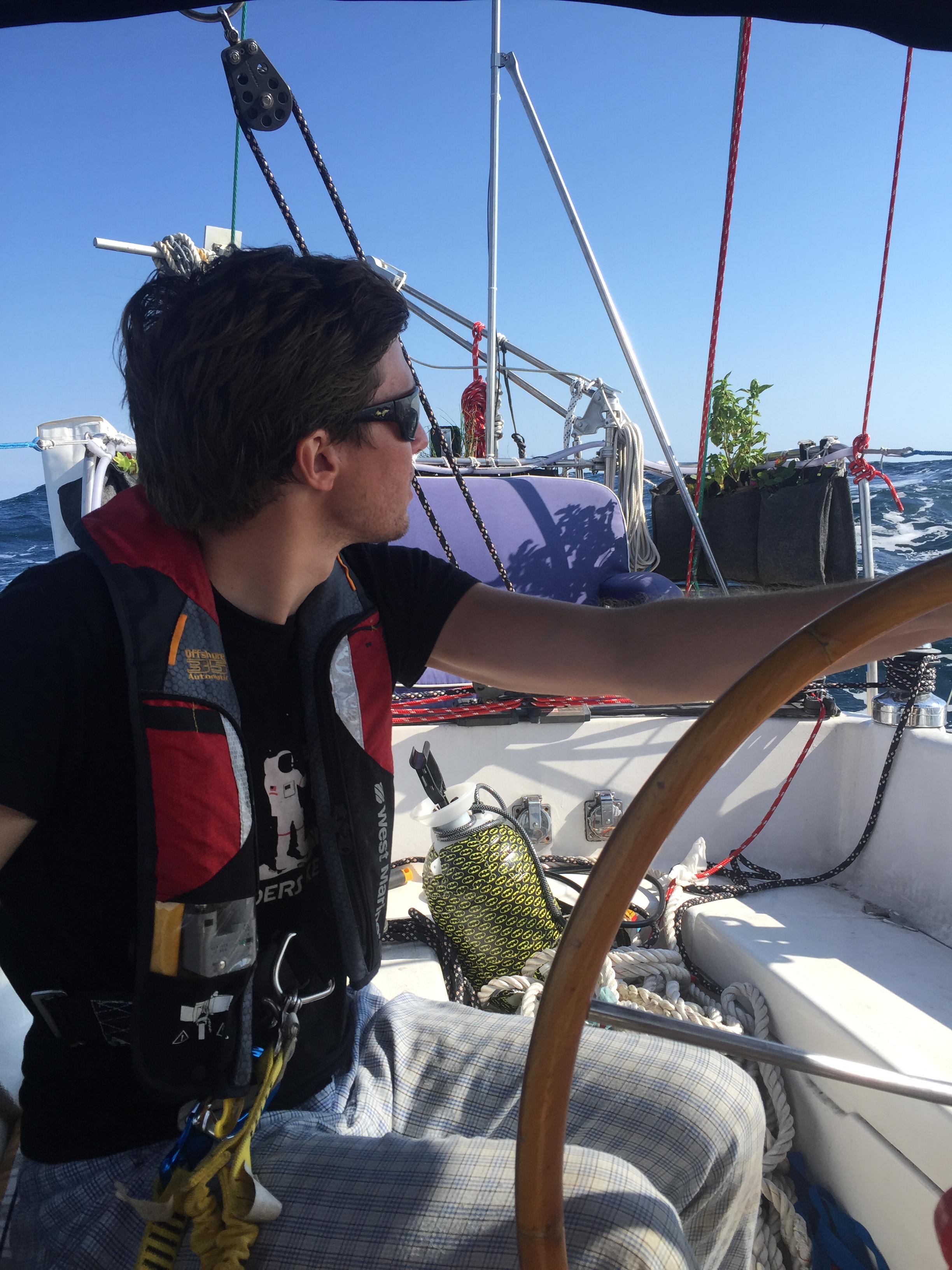Showers are nice, and what's even better is a hot shower! When you are plugged in at a marina, the water heater makes the shower on the boat as comfortable as a shower on shore, but what about when you are anchored out and not plugged in to shore power?
Some people will crank up their generator to power the water heater, others heat their water with the diesel motors coolant. On Wisdom, we don't have either option since we never had a generator and have replaced our water cooled diesel with an air cooled electric motor. Living with an electric motor should not condemn you to a life of cold showers!
We use the power of the sun to heat our shower water in a way that uses no electricity or fancy complicated systems.
We call it the BatShower!
This contraption is simply an insecticide sprayer (new and never filled with pesticide) wrapped in black tape with a kitchen sprayer hose connected to the container.
The black tape helps collect more radiation from the sun, heating up the water inside all the faster! Black paint could also work but we worried that the paint would chip off and make a mess on the boat. The black tape has developed some scrapes and nicks over the years, but there has yet to be any flaking or mess caused by this setup.
The kitchen sprayer nozzle has been a wonderful addition to the shower. We felt weird spaying ourselves with the pesticide nozzle, and the nozzle took up a lot of space. The kitchen sink nozzle is small, compact, and works just like a regular shower nozzle. The button on the handle lets you control the flow of water as well, depress the button to flow water, release the button and the flow stops completely! Thanks to this shower nozzle, we waste almost no water during our showers.
To operate the shower, simply pump the handle a few times to build up pressure, then wet yourself, lather up, and rinse yourself off. Maddie and I can both shower with the volume of water stored in this shower, and still have some left over! Having the very limited quantity of hot water also reduces the risk of a long shower depleting our water tanks. Long showers with the sprayer are interrupted by the need to re-pump the tank! This helps keep showers short and water use to a minimum while still getting you clean and making sure you smell nice.
To warm the tank, we simply leave it laying in the sun all day. You can actually see it in most of the pictures, it's left resting in one area or another while we sail or at anchor; passively collecting sun and heating up our shower water.




By the end of the day, when we are ready for our shower, we have plenty of hot water for us! If no one is around, we shower on the deck or in the cockpit; if we are in a crowded anchorage, we shower inside in the head by placing the shower on the composting toilet and standing in the shower stall area.
It takes up a lot less space than a regular shower, requires no plumbing, and only relies on sunlight to generate our heated shower water! If we have a cloudy or cold day and the shower is unable to warm up, we simply boil some of the water on the stove and pour it back into the container. That will give us plenty of hot water in a hurry!








